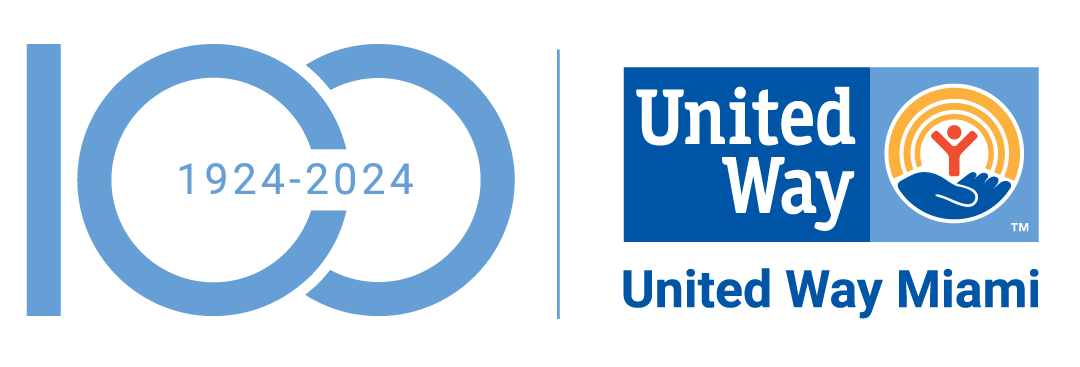National Report Reveals that Federal Poverty Data Undercounts How Many People with Disabilities are Living in Financial Hardship
New research shows that nearly 68 percent of people with disabilities in Miami-Dade County are struggling to afford the basics
MIAMI (September 7, 2022) – The majority of people with disabilities in Miami-Dade County – nearly 68 percent – lived in households that couldn’t afford the basic costs of living in 2019, according to a new report from United Way Miami and its research partner, United for ALICE. Statewide, 53 percent of people with disabilities are living in financial hardship – Florida comes in at third with over 1.5 million people with disabilities living in financial hardship compared to California with the highest (2.2 million) and Texas with the second highest (1.6 million).
The ALICE in Focus: People with Disabilities report reveals the disproportionate impact of financial hardship of the county’s individuals with disabilities, while challenging the reliance on federal poverty guidelines for assistance programs. The report finds that traditional measures of poverty have severely undercounted the number of people with disabilities of all ages who are living in financially insecure households.
While 23.5 percent of all people with disabilities in the county were deemed to be living in poverty in 2019, the report shows that nearly 44 percent – more than twice as many – lived in families defined as ALICE (Asset Limited, Income Constrained, Employed). ALICE households earn more than the Federal Poverty Level, but less than what it costs to live and work in the modern economy. ALICE families work, yet have little or no savings and are one emergency away from falling into poverty. These two groups combined are considered to be living below the ALICE threshold – demonstrating that nearly 68 percent of people with disabilities in Miami-Dade County lived in households with income that doesn’t meet the basic costs of housing, defined as: childcare, health care, transportation and a smartphone plan. The data includes people with both physical and cognitive disabilities.
“It is unfortunate to see that residents with physical, mental or emotional conditions who are struggling financially are being undercounted and therefore, underserved,” says Mary Donworth, Chief Program Officer at United Way Miami. “Having a disability puts individuals at substantial risk for financial instability more than anything else. These individuals face barriers to accessing a quality education, secure jobs and critical supports. There is still so much work to be done to ensure our disabled population and their families are being provided with the proper support they need to thrive,” continued Donworth.
The impact on a family’s financial stability cannot be understated. Coupled with caregiving demands, the cost of raising children and the added expense of resources often needed for children with disabilities can limit a parent’s earning potential and overall household income. In 2019, 71 percent of children with disabilities in the county under ages 0-17 with disabilities lived in households below the ALICE threshold, compared to 65 percent of adults with disabilities.
The new research also shows that outdated federal guidelines prevent the majority of residents with disabilities who are living in financial hardship from accessing critical public assistance. According to the new report, a staggering 66 percent of residents with disabilities below the ALICE Threshold did not receive Supplemental Security Income (SSI). The SSI program requires that recipients have income below the poverty level, be unable to work, have a “severe” impairment and have less than $2,000 in their bank accounts, $3,000 if they are a married couple.
“Income eligibility requirements for SSI haven’t been updated in nearly four decades, which is one of the big reasons why more than 144,000 residents in Miami-Dade County were shut out of receiving a much-needed financial lifeline,” said Mary Donworth. “By using data that takes into account the true cost of living — we can establish critical supports that help those who need it the most.”
Other findings from ALICE in Focus: People with Disabilities include:
- Black and Hispanic Miami-Dade County residents with disabilities — 69 percent and 73 percent respectively — disproportionately experienced financial hardship compared to 51 percent of white people with disabilities.
- Miami-Dade County saw that nearly 96 percent of residents with disabilities below the ALICE Threshold are living in rent burdened households, meaning they spend 35 percent or more of their income on their rent, plus utilities, taxes and insurance – this is compared to nearly 89 percent of residents with disabilities below the ALICE threshold who own their homes, but are housing cost burdened, meaning they spend 35 percent or more on housing related expenses.
- People with disabilities in Miami-Dade County in the labor force were less likely to be ALICE (46 percent) vs. people out of the labor force (75 percent)
- Females with disabilities across Florida struggled more to afford the basics — 55% — compared to 50% of males with disabilities.
The report also points out that rates of hardship are likely even higher than reflected, as data is not available for individuals living in nursing homes, correctional facilities and other group settings.
More data is available through the ALICE in Focus: People with Disabilities interactive data dashboard, which provides filters for regional and local geographies, age, race, disability status, living arrangements and household work status. To view the full report, visit unitedforalice.org/focus-disabilities.
ALICE in Focus: People With Disabilities marks the second installment in the ALICE in Focus Research Series, which draws from the U.S. Census Bureau’s American Community Survey (ACS) Public Use Microdata Samples (PUMS). Each installment in the series highlights a specific segment within the ALICE demographic. The first installment focused on children; the next report will feature veterans.
About United For ALICE
United For ALICE is a driver of innovation, research and action to improve life across the country for ALICE (Asset Limited, Income Constrained, Employed) and for all. Through the development of the ALICE measurements, a comprehensive, unbiased picture of financial hardship has emerged. Harnessing this data and research on the mismatch between low-paying jobs and the cost of survival, ALICE partners convene, advocate and collaborate on solutions that promote financial stability at local, state and national levels. This grassroots ALICE movement, led by United Way of Northern New Jersey, has spread to 24 states and includes United Ways, corporations, nonprofits and foundations in Arkansas, Connecticut, Delaware, Florida, Hawai‘i, Idaho, Illinois, Indiana, Iowa, Louisiana, Maryland, Michigan, Mississippi, New Jersey, New York, Ohio, Oregon, Pennsylvania, Tennessee, Texas, Virginia, Washington, Washington, D.C., West Virginia and Wisconsin; we are United For ALICE. For more information, visit: UnitedForALICE.org.



